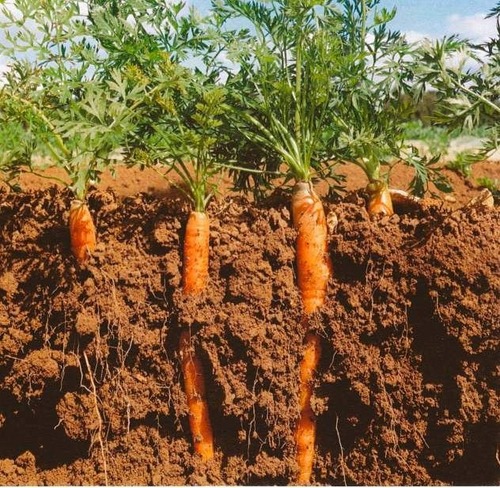After harvesting your tomatoes, you don’t have to let your garden rest. By planting these six crops—beans, carrots, spinach, garlic, radishes, and lettuce—you can keep your garden productive while also improving soil health and pest management. Each of these crops offers unique benefits, from nitrogen fixation to soil aeration, making them ideal companions for a post-tomato harvest garden. Rotate your crops to promote healthy soil and maximize your garden’s potential year-round!
1. Beans

Beans are a fantastic crop to plant after tomatoes because they help replenish nitrogen in the soil. Tomatoes are heavy feeders, especially when it comes to nitrogen, leaving the soil somewhat depleted after the growing season. Beans, being legumes, have a symbiotic relationship with nitrogen-fixing bacteria in their roots, which means they can return nitrogen to the soil.
Beans are versatile and can be planted either as bush beans or pole beans. Bush beans grow quickly and can be harvested multiple times, while pole beans save space by growing vertically.
Tip: Rotate tomatoes and beans each season to naturally improve soil fertility without needing additional fertilizers.
2. Carrots

Carrots are another excellent crop to grow after tomatoes. Since tomatoes are heavy feeders and tend to grow above ground, planting root vegetables like carrots after them is an ideal way to utilize the deeper soil. Carrots thrive in loose, well-drained soil, which is often what remains after a tomato harvest.
Carrots are relatively easy to grow, and their long growing season can extend well into the cooler months. They also improve soil structure as their roots break up compacted soil.
Tip: After pulling out tomato plants, loosen the soil with a garden fork before planting carrot seeds to encourage even root growth.
3. Spinach

Spinach is a fast-growing leafy green that is perfect for planting after tomatoes, especially if you’re entering the cooler fall months. Tomatoes are known to take up a lot of space and nutrients, but spinach is less demanding and can grow in the same space as a “catch crop” for a quick yield before the end of the season.
Spinach is rich in nutrients, and its tender leaves are perfect for salads, smoothies, and cooking. Additionally, spinach grows well in cooler weather, making it an ideal fall crop once your tomatoes are done.
Tip: Amend the soil with compost before planting spinach to replace the nutrients used by the tomato plants, ensuring a healthy yield.
4. Garlic

Garlic is an excellent crop to plant after tomatoes, especially if you are looking to utilize your garden space through the winter months. Garlic grows slowly, so planting it after your tomato harvest in the fall allows it to establish roots before winter. By the following summer, your garlic bulbs will be ready to harvest.
Garlic not only takes advantage of the cooler seasons but also helps deter certain pests and diseases that may affect tomatoes. It’s a great rotational crop that improves soil health and protects against future pest problems.
Tip: Choose garlic varieties that are suitable for your climate, and plant cloves pointed-side up for the best growth results.
5. Radishes

Radishes are quick-growing root vegetables that thrive after tomatoes. They are perfect for filling in gaps left by your tomato plants, and their short growing period allows you to have a fresh crop ready in as little as three to four weeks.
Radishes loosen the soil as they grow, making it easier for future crops to establish themselves. Additionally, their fast-growing nature makes them ideal for late-season gardening when you’re short on time but still want to get a harvest in before the frost.
Tip: Plant radishes in intervals every couple of weeks for a continuous supply throughout the cooler months.
6. Lettuce

Lettuce is another leafy green that grows well after tomatoes. Like spinach, lettuce is a cool-weather crop, making it an ideal choice for planting once the hot summer months are over. Lettuce has a shallow root system, meaning it won’t require the deep, nutrient-rich soil that tomatoes do. You can grow various types of lettuce, such as romaine, butterhead, or loose-leaf varieties, to add variety to your garden.
Lettuce grows quickly, allowing you to get multiple harvests before the weather turns too cold. It’s also an excellent crop to grow in between slower-growing vegetables, maximizing the productivity of your garden space.
Tip: Use shade cloth or mulch to keep lettuce cool and prevent it from bolting in warmer weather.